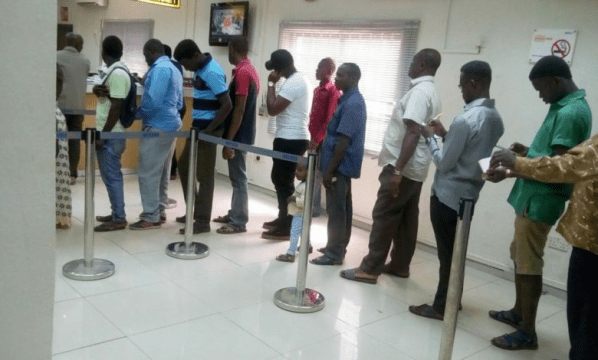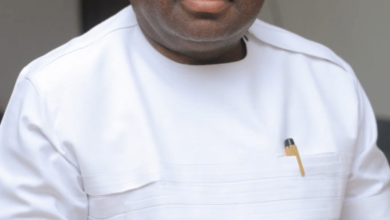Bad debts weigh down banks as loan losses rise 25%.

By G9ija

THE volume of bad debt recovered by banks fell by 18 per cent, year-on-year, YoY, to N28.68 billion in nine months ended September 30th, reflecting the severe impact of the hostile environment on businesses across the country.
Also as a result of the challenging economic situation, more debtors defaulted on loan repayments during the period, leading to a 32 per cent, YoY increase in loan losses (bad loans) to N165.46 billion recorded by banks from N125.68 billion in the corresponding period of 2021.
Consequently, loan recovery as a ratio of loan losses (bad loans), fell by 11 percentage points to 17 per cent during the period.
Financial Vanguard findings from the operating results of ten banks for the nine months ended September 30th 2022, 9M’22, showed that seven banks recorded decline in loan recovery while three recorded increases.
The results of the banks showed that the volume of loan recovery fell to N28.68 billion in 9M’22 from N34.89 billion they recovered in 9M’21.
The ten banks are Access Bank, GT Holding Company, FBN Holdings, United Bank, UBA, and Zenith Bank. Others are Fidelity Bank, Sterling Bank, Stanbic IBTC, Unity Bank and Wema Bank.
The decline was driven by the Tier-1 banks which combined together recorded a 28 per cent fall in loan recovery to N19.94 billion in 9M’22 from N27.71 billion in 9M’21.
The Tier-1 banks also recorded a 25 per cent YoY increase in loan losses to N144.05 billion in 9M’22 from N115.12 billion in 9M’21.
All the Tier-1 banks, recorded decline with the exception of FBNHoldco which recorded 5.6 per cent, YoY increase in loan recovery to N5.51 billion in 9M’22 from N5.22 billion in 9M’21.
Among the Tier-1 banks, GTHolco recorded the largest decline of 61 per cent in loan recovery to N1.49 billion in 9M’22 from N3.85 billion in 9M’21. UBA recorded a 38 per cent decline to N2.46 billion from N3.95 billion. Zenith Bank also recorded a 35 per cent decline to N3.63 billion from N5.51 billion while Access Bank recorded a 26 per cent decline in loan recovery to N6.85 billion in 9M’22 from N9.17 billion in 9M’21.
Tier-2 Banks
However, the Tier-2 banks recorded a 21 per cent increase in loan recovery to N8.73 billion in 9M’22 from N7.18 billion in 9M’21.
However, the Tier-2 banks also recorded a 103 per cent YoY increase in loan losses to N21.4 billion in 9M’22 from N10.56 billion in 9M’21.
The increase in loan recovery by the Tier 2 banks was helped by Fidelity Bank and Unity Bank which recorded 100 per cent and 88 per cent, YoY, increase respectively while the remaining three Tier-2 banks recorded declines.
Fidelity Bank recorded loan recovery of N3.79 billion in 9M’22 up from zero recovery in 9M’21. Unity Bank on its part, recorded N2.13 billion loan recovery up from N1.14 billion in 9M’21.
Stanbic recorded the largest decline of 76 per cent, YoY in loan recovery among the Tier-2 banks, to N1 billion from N4.18 billion in 9M’21.
Wema Bank followed with a 24 per cent YoY decline to N28 million from N37 million, while Sterling Bank recorded a 2.7 per cent YoY decline to N1.78 billion in 9M’ 22 from N1.83 billion in 9M’21.
Debtors battling economic shocks -Analysts
The sharp decline in volume of loan recovery is majorly caused by increasing economic challenges namely high energy prices, forex challenges and inflation, which makes it difficult for debtors to repay their loans.
Managing Director/ Chief Executive of PFI Capital, a Lagos based investment firm said: “Macroeconomic headwind is the most prevalent amidst a myriad of factors affecting commercial banks’ decline in loan recovery. Individuals are dealing with a cost-of-living crisis, which has reduced the purchasing power of consumers, as prices of goods and services continue to soar at an increasing pace.
“Hence, disposable income has decreased in real terms; customers would likely not be able to pay up their loans because there would be little or no cash left after paying for their basic needs.
“Similarly, businesses are battling with the cost of doing business exacerbated by higher diesel prices, increasing foreign exchange rate, and increasing cost of servicing debts. Manufacturing companies that are import dependent for their inputs suffer from the higher cost of raw materials. Consequently, their ability to pay back their loans has been impaired.
“Tier 1 banks suffered a more significant decline due to the volume of credits they provide which is more than tier 2 banks. Besides this, no specific factors relating to any bank led to the decline in loan recovery.”
Similarly, Tunde Abioye, Head Equity Research, FBNQuest Capital, said: “If the economy isn’t doing well, it would actually be more difficult for banks to make more recoveries. Of course other factors include the resources that banks put into the recovery process, and how well they are able to negotiate with their delinquent customers.”
“I think it has to do a lot with the state of the economy because many of the businesses or investments for which those loans were secured are in serious shocks, said, Muda Yusuf, Chief Executive Officer, Center for the Promotion of Private Enterprise (CPPE),
Elaborating, he said: “Starting from the period of COVID-19 when we had very serious shocks and we even had a recession in 2020. Many of these companies are yet to recover.
“And while we are struggling to overcome that we had this Russia Ukraine crisis which also came with a whole lot of problems, supply chain, high energy prices and all of that.
“And on top of that many of those businesses have serious issues with forex. Many of those businesses are dependent on imports either for raw materials or equipment, so the forex issue has been a major issue and that problem has not abated now.
“So the macroeconomic headwinds are still very profound and I imagine that for most of them that is what would be responsible. And these macroeconomic headwinds are reflected in the forex situation, the depreciation and the liquidity, it is also reflected in the high energy cost, we have seen what is happening to inflation. We have seen what is happening to even purchasing power.
“So all those things have made it extremely difficult for businesses to repay their loans. Although a small part of it will just be related to the character of those who borrowed. But the bigger factor in my view is the macroeconomic headwind.”
Also commenting, David Adonri, Chief Executive Officer, Highcap Securities Limited, said: “It is not surprising that loan recovery by banks has declined compared to last year. First, the harsh economic environment in Nigeria has adversely affected the income of borrowers. “Some of the debts, especially overdrafts were repriced this year as a result of a hike in interest rate. This escalated the short term debt burden on borrowers amidst declining income due to galloping inflation.
“Subject to confirmation, I suspect that several bank credits to state governments may have become delinquent due to declining FAAC allocation and illegal election expenses.
“Finally, credits that were advanced by banks to domestic borrowers in hard currencies may have become delinquent due to forex scarcity and continued depreciation of the Naira.”





